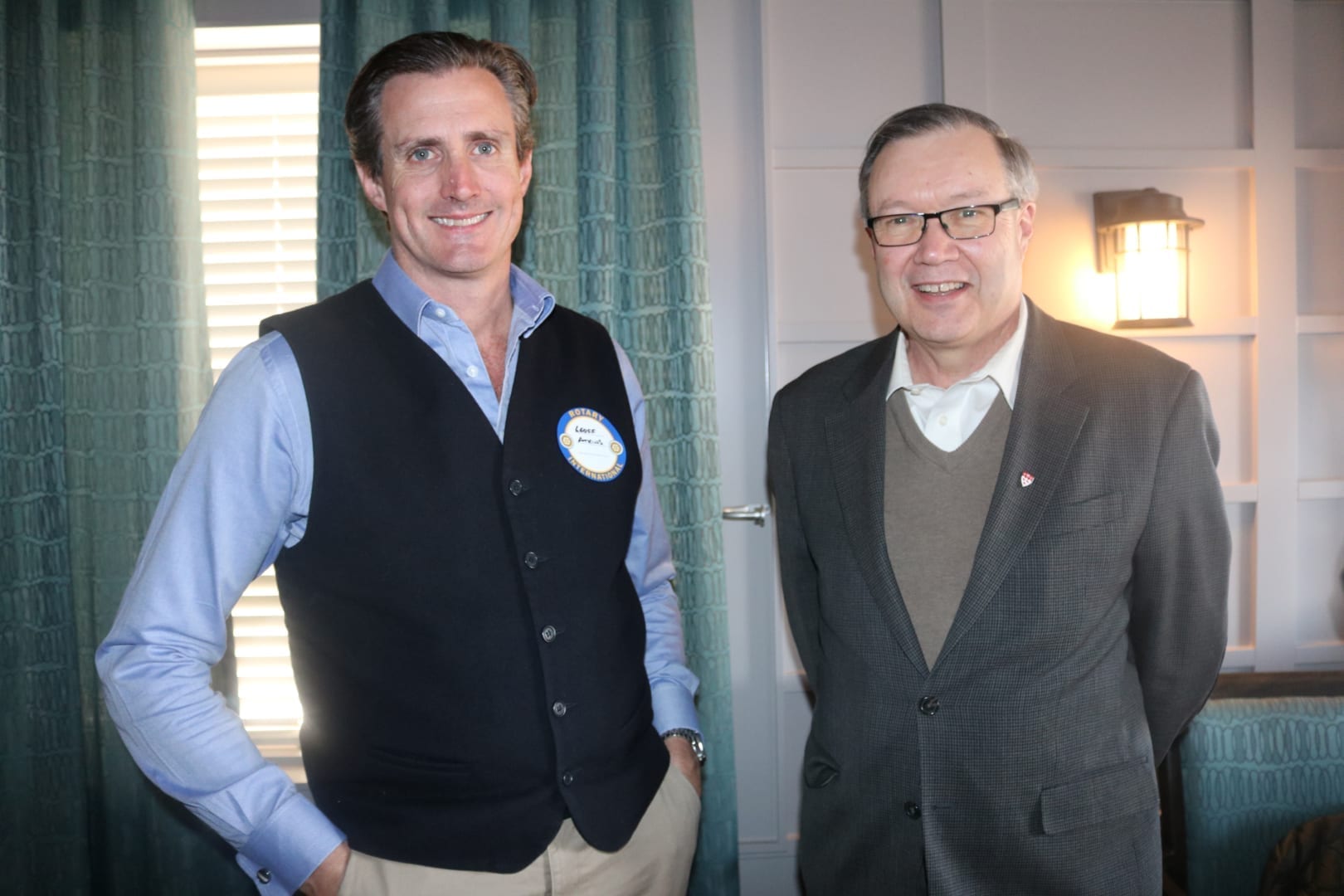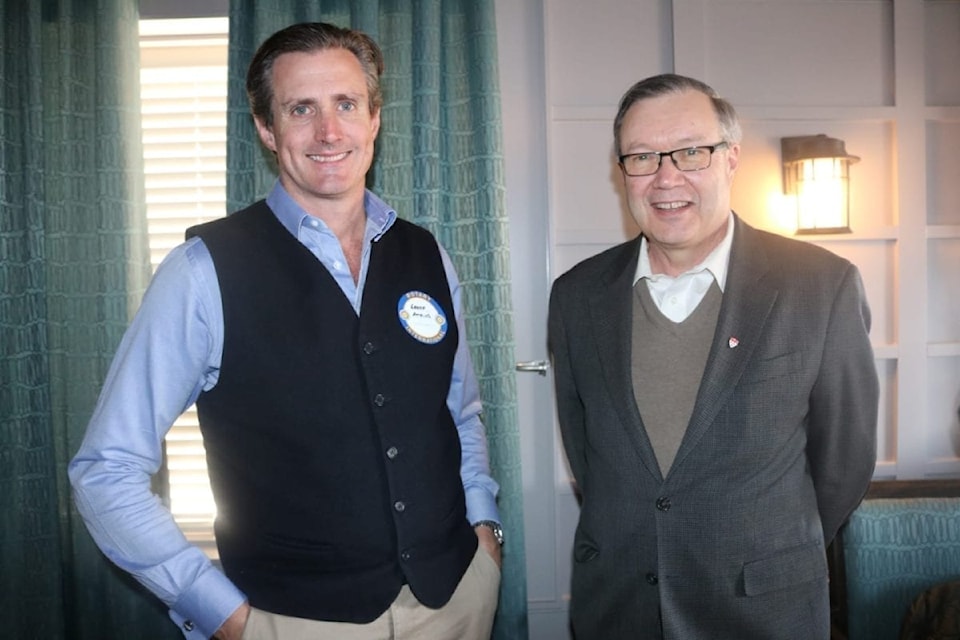The head of an Australian-based resources company determined to launch a micro-scale rare earth elements mining project in the NWT paid a visit to Yellowknife last week.

Geoff Atkins, managing director of Cheetah Resources, joined Don Bubar, CEO of Avalon Advanced Materials, to address the Rotary Club of Yellowknife regular lunch of about 50 people at the Chateau Nova Hotel on March 21. The speaking engagement was among nearly 40 meetings that Atkins held with local groups to introduce himself and to discuss how he sees the "micro-mining" project developing over the next two years.
Atkins and Bubar entered an agreement for $5 million in January that gives Cheetah ownership of near-surface resources at the T-Zone and Tardiff Zone of the Nechalacho project near Thor Lake, about 100 km southeast of Yellowknife.
“I believe rare earths have an enormous future,” Atkins said, adding he hopes his company becomes the dominant producer in the NWT. “Ultimately, the goal is to grow the project and be a very significant producer of rare earths in the world.”
As NWT mines mature, Atkins said there is a great opportunity for the territory’s mineral industry to grow over the next decade in rare earth elements because there is an exponential, year-to-year increase in demand products that rely on rare earths, such as electric vehicles.
The two light rare earth elements most in pursuit at Nechalacho are neodymium and praseodymium, which have very similar and specific uses as they provide strong magnet materials in the motors of electric vehicles, which helps with battery efficiency.
A third element, lanthanum, is also present and is used in various products, including hybrid vehicles.
Typically people think of lithium being the only mineral associated with electric vehicles because of its use in batteries, Atkins said.
“Batteries are only one element of electric power, but the other is the electric motor,” he said. “It is a very different motor than what is in an internal combustion engine. Typically, an electric vehicle will have four or five motors and those motors are driven by rare earth magnets.
“The stronger the magnet, the more efficient the motor is, the less weight the car carries, and the more powerful the motor is. That is why rare earths are very, very important to electric vehicles.”
A growing electric vehicle market is what the company is most excited about.
“Car manufacturing has reached a critical point where you’re seeing an explosion in the number of (electric) cars being produced,” said Atkins. “What that means is that there is a demand for rare earths going up very steeply but the supply for rare earths - because of the length of time it traditionally takes to develop a project - it can’t catch up.”
Recent media reports show that the demand for electric vehicles is growing globally, including in Canada, where more than two per cent of all cars sold in 2018 were electric vehicles.
Clean Energy Canada released a poll this month stating that most Canadians want electric vehicles to become the majority of sold cars in the near future, with most expecting it to happen in the next 15 years.
In the recent federal budget, the government introduced incentives to try to get Canadians to buy more electric vehicles with zero carbon emissions. This includes $300 million in a “purchase incentive” that aims to increase the number of electric or hydrogen-fueled cars purchased, as long as they are under $45,000.
"There is no doubt demand for electric vehicles is going to grow," added Bubar, whose company is also overseeing a lithium project in Ontario that would go into car batteries. "The biggest driver on it is what is happening in China as they are really encouraging the development of electric vehicles. They are becoming the leader. All the automotive manufacturers are planning to introduce electric vehicles, sooner rather than later. The main issues they have is the supply chain on critical materials."
China produces more than 80 per cent of rare earths and also holds the most rare earth elements deposits. Canada is yet to develop its supply, despite having “some of the most advanced (rare earth elements) exploration projects in the world,” according to Natural Resources Canada.
Atkins' plan is rather than build a large-scale plant, he wants to start off much smaller in scale and then gradually expand production as customers and local people become more accustomed to the operation.
As Atkins' company would take ownership of the resource, the estimate of the cost to get it up and running is in the range of $10 to $20 million.
“So what we’re saying is - let’s get into production as soon as we can,” Atkins said. “Let’s get our customers happy. We can then grow with our customers to incrementally fulfill the demand gap.”
Dry mining
The company is looking to develop a work plan for the coming year and finalize a project description in the next several months to fully explain to the public the work it intends to do and meet environmental regulations in the process. The company also needs to ensure the project falls within environmental regulations and that the Mackenzie Valley Land and Water Board approves. The project proponents say there won’t be negative impacts to the environment because it will involve a dry mining process, meaning minimal use of water, no chemicals and operations all contained on a small piece of property.
It is also a good time for the project to go ahead because sorting technology for minerals has advanced in the last 10 years, Atkins said. The project at Nechalacho would involve using a sorting machine that would take in crushed rock on a conveyor. Highly-accurate, high-precision X-ray sensors would identify minerals that would be valuable, and separate those pieces from the core rock and for pickup.
Any leftover rock could then be used for gravel needs to be shared with communities or governments for air runway development or other infrastructure projects, he said.
Reclamation
Because there would be lesser amounts of resources needed to extract the minerals, Atkins said reclamation would be quite simple. The project he envisions would leave an open pit that would be filled with gravel, given topsoil and covered in vegetation.
